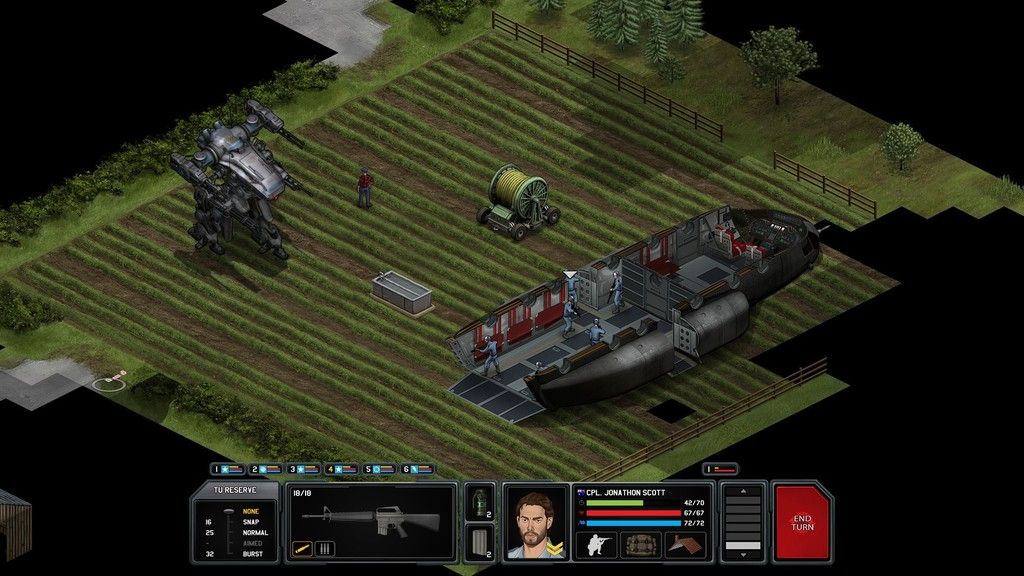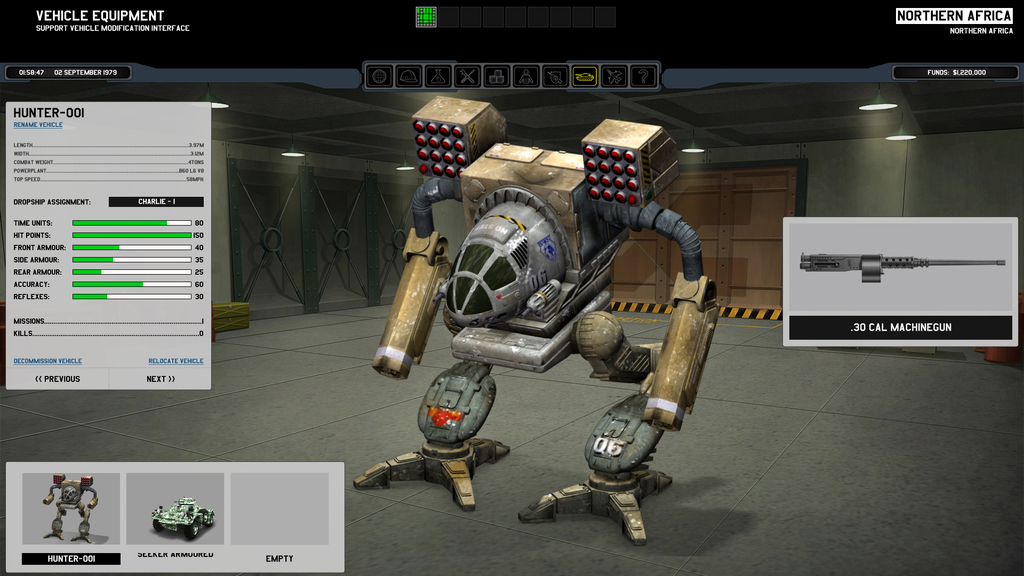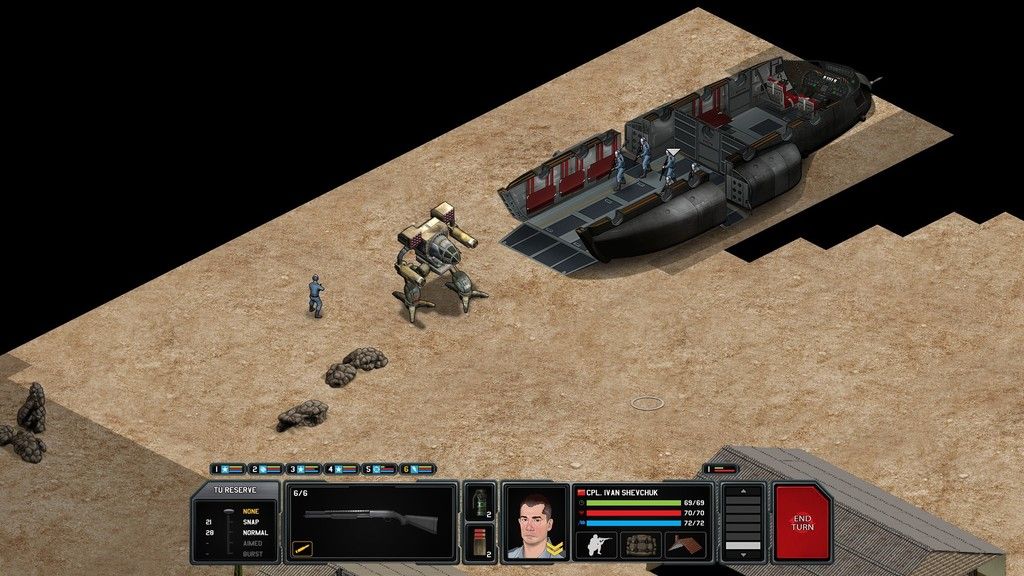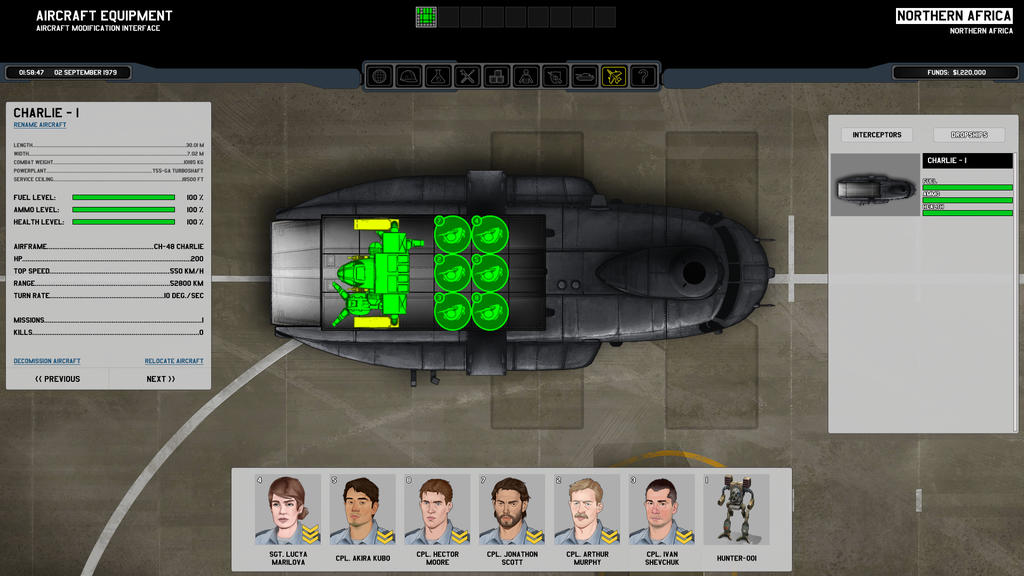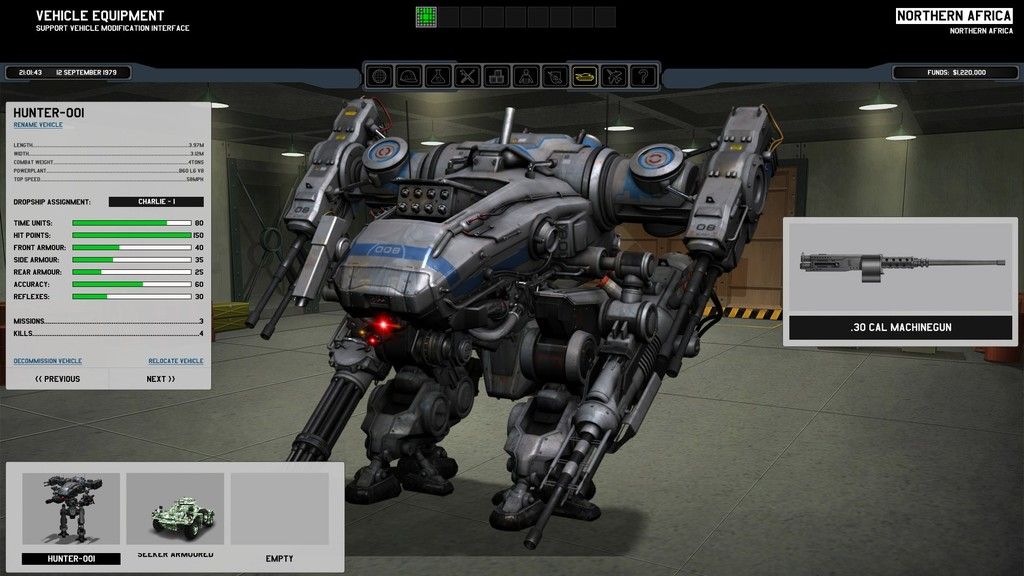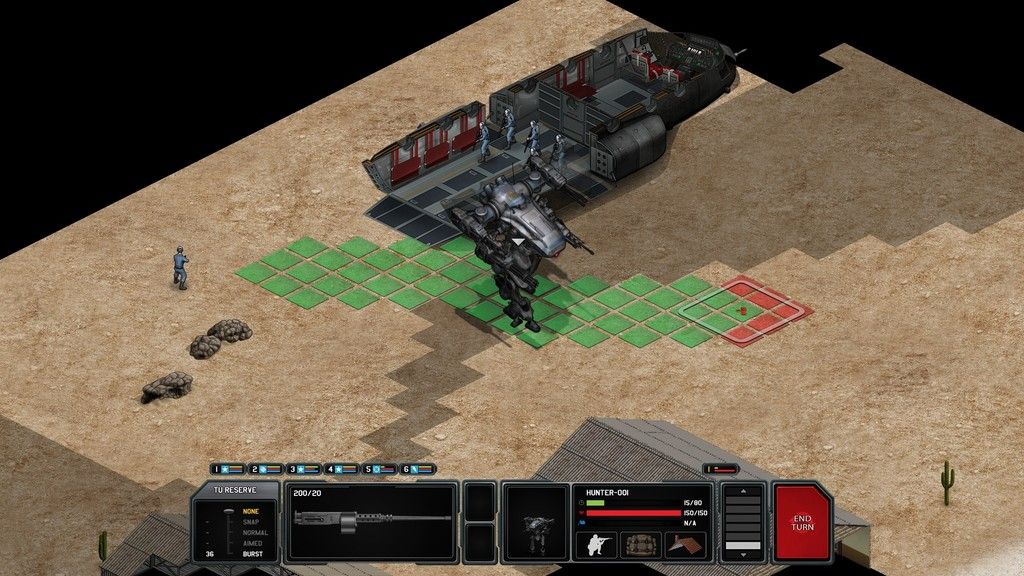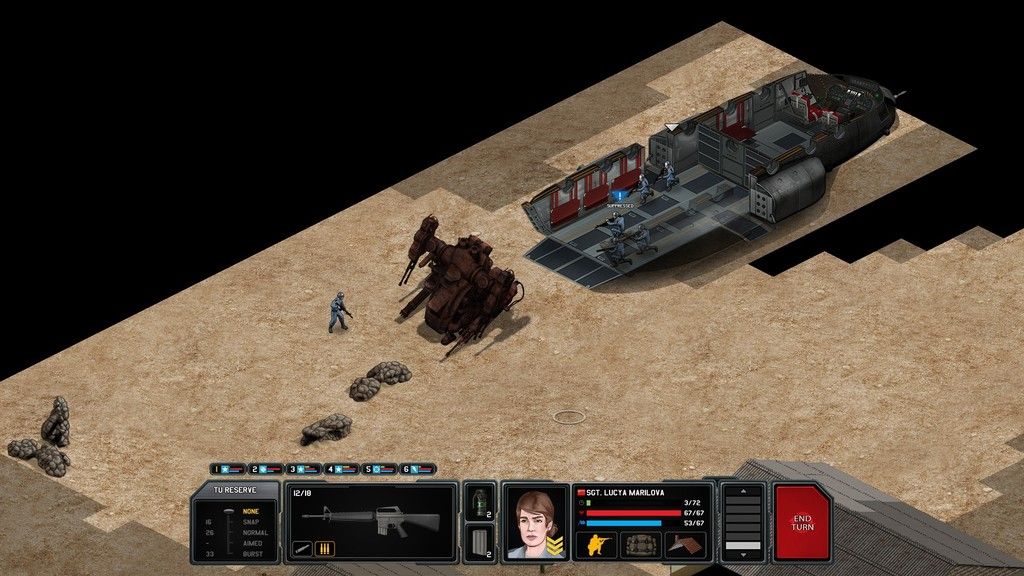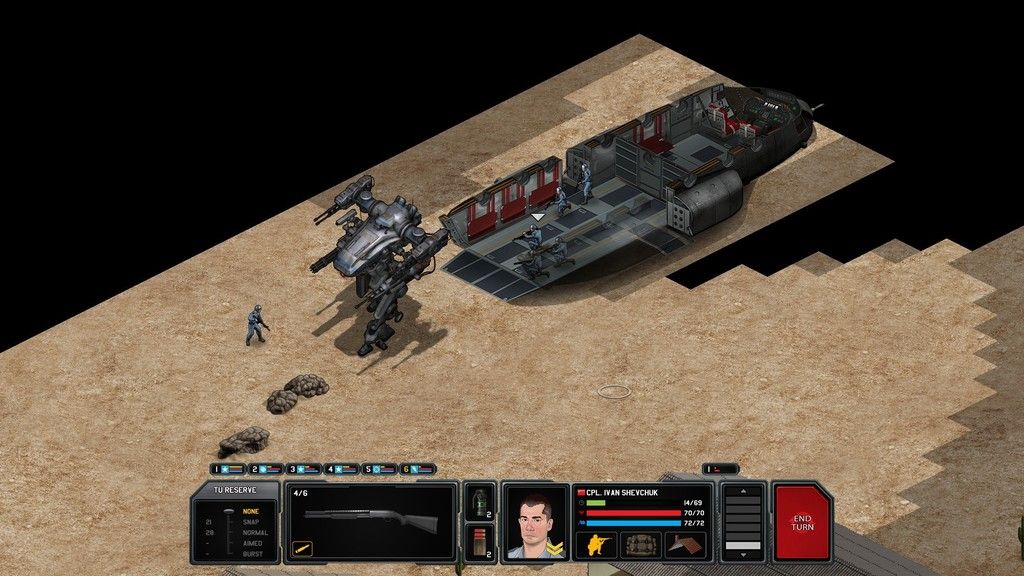I've recently been thinking some more about how the strategy layer of Xenonauts 2 could be set up. I've been through many iterations in my head and a number of ideas have been considered and discarded ... sometimes weeks later.
Here is what I'm currently thinking:
- I want to move strategic resources to the actual map, giving you something to fight over
- I want to make the ground combat relatively more important than the air combat
- I want to reduce combat mission "grind" and make each mission more varied and interesting
- I'm not sure about the "aliens win by starting a nuclear war" thing any more, but I still want to introduce a Cold War political element to the game
Strategic Resources:
These are the things the Xenonauts use on the strategy map - planes, scientists and engineers. In Xeno 1 they are contained within your base and so your main way of interacting with a region is just by putting a base nearby. Of course you'll generally only have about ~3 bases per playthrough, and the shape of the world means they'll generally be in or around Central America, North Africa and the eastern part of Russia.
As your only incentive to protect a region is the funding you receive from it, there's also not really many ways to encourage a player to protect isolated parts of the world that don't offer much money - e.g. Australia. Moving the strategic resources to the map itself allows us to incentivise the player to protect different regions and gives them the means to do so ... and should unlock many more potential playstyles.
Science Teams:
Let's take the science teams as an example. Instead of hiring scientists to your main base as in Xeno 1, this time the world map has perhaps six science teams on the map who have been identified as sufficiently reliable and capable that they could be recruited into the Xenonauts. Each is led by a unique scientist with specific bonuses and penalties to certain types of research.
Perhaps the science team in Australia already have operational prototype laser weapons, so if you recruit them to the cause immediately then they share the tech and you can be carrying lasers into battle from the very first mission. Of course, this means your forces are spread more thinly than if you had recruited the distinctly average science team in North America instead.
Aircraft:
Your interceptor aircraft are your primary method of providing protection to the various regions on the strategy layer. These will be moved onto the map to prevent there being "ideal" places to put your aircraft; in this setting there are airbases in various locations that contain specific squadrons of planes for the player to requisition. If an airbase is in a favourable location (covering lots of territory), buying squadrons there is more expensive.
The planes come in squadrons of five, with the number of planes reflecting the health of the squadron. Individual destroyed planes are replaced for free within a couple of weeks by the host nation, but a damaged squadron has less firepower as well as less HP so choosing whether to deploy them should actually be a genuine choice.
The number of combatants in the air combat will have a much higher limit so clustering planes in a particular area is more rewarding. This may potentially allow us to start deploying big UFOs right from the start, as if a player wants to focus their early game on building a swarm of fighters in some regions rather than waiting for more advanced aircraft to make shooting down big UFOs more viable, maybe that could be a valid alternate playstyle.
Anyway, this set-up allows us to retain the actual geographic interception system from Xenonauts 1 rather than abstracting it entirely as I was considering before. I think removing it may have made the game feel a bit too board game-like.
Bases:
For the above reasons, you don't need bases any more. The "main base" is highly secret and does not appear on the main strategic map, and for game purposes it does not exist in the world. I'm aware this removes one of the cool features of X-Com / Xeno 1, but I think having a more detailed strategy map that you can interact with in many different ways will make up for it.
Ground Combat & Teleportation:
OK, this idea will probably sound a bit bizarre at first ... but I think the Xenonauts should have a teleporter. This is a piece of alien technology recovered in the Iceland Incident and it is the only functioning teleporter possessed by the humans. This is what makes the Xenonauts a uniquely capable fighting force, able to instantly respond to alien activity anywhere in the world.
This solves several issues at once:
- How can the Xenonauts react to a terror site on the other side of the world in a realistic timeframe?
- How can we put a sensible in-game limit on the number of the soldiers / equipment that can be taken on a mission?
- How can we sensibly prevent the player playing too many combat missions?
The first point is pretty straightforward - with a single base, the Xenonauts can teleport a strike team into position to deal with an alien attack within minutes of it starting, irrespective of where it is in the world. It is also a unique capability that even the biggest and best-equipped armed forces in the world cannot match, and is a justification for why such a vital organisation can be so small.
Energy Allowance:
The second point refers to two basic questions: why would the Xenonauts only deploy eight troops on a mission? And why can't my soldiers carry more equipment into battle? The answer to both is really "It makes the game more fun to play", but having an in-game justification is important.
My idea here is the teleporter has a limited teleportation capacity, and is particularly bad at transporting metal. We can give the player an "energy allowance" to play with for each mission, with armour and equipment being disproportionately expensive. A player could perhaps take up to twelve soldiers on a mission provided they were lightly armed and armoured, but if they want to have soldiers with heavy armour and lots of equipment they might only be able to take six of them.
To me, this is a cool twist - choosing your loadout for a mission is no longer about just loading a soldier with as much gear as they can carry, rather it is about choosing the minimum amount of gear you think you can get away with to maximise the amount of troops you can take into battle. This makes it far more interesting than before.
Power levels:
The third point is based on an observation from Xeno 1 - if a player can gain an advantage by grinding combat missions, some people will do so even if they find it repetitive and do not enjoy doing it. I want a system that prevents players feeling obliged to do "yet another" mission.
The two options here are a soldier fatigue system or a teleporter power level system. We might use both, but I'll mainly discuss the power level system here. The concept is basically just that the teleporter has a massive battery that is drained every time you send soldiers on a combat mission and is slowly recharged by the base reactor.
The amount of "energy allowance" used on a mission can be tied to the power cost of the mission. A player is able to send a squad out on a mission whenever they want, and if they have enough power saved they could theoretically do two missions immediately after one another. However that could leave them vulnerable if an important mission came up soon afterwards as they might not have enough power to deploy a full squad.
This added resource management has a dual purpose - it makes the player ask "hmmm, do I really need to send a full squad on this mission?" and also "hmmm, do I really need to do this mission at all?"
Not only will it remove the concept of "grinding" from the game, it should also lead to situations when the player is deliberately making a ground combat mission harder for themselves to try and win a strategic advantage - and tense, difficult ground combat missions make for a fun gameplay experience.
Air Combat vs. Ground Combat:
One of the bigger design failings in Xenonauts was your chance of winning the game was controlled more by your aptitude at winning the air war than it was you winning the ground war, whereas skill at the ground combat should really be the main driver of success.
The important thing to do here is to decouple the UFOs from the progress of the alien invasion. Having enough planes to shoot down all of the incoming UFOs in Xeno 1 prevents aliens ever spawning any terror missions, alien bases or attacking your base. Your funding only ever goes up and the game becomes a cakewalk.
The same teleporter technology the Xenonauts use can be used to allow the aliens to neatly side-step this issue, allowing them to launch terror attacks etc without a UFO. The UFOs can instead fly around bombing infrastructure and doing other things that damage your funding, which means that destroying them remains important ... but now some of the burden is shared by your troops.
I think we can play with the idea of time relative to the air combat, too - assuming the intent of a UFO is known, the player could be given several potential interception times to choose from. The faster the player takes the UFO down the less damage it will inflict, but more distant interceptor squadrons will only be able to arrive after a certain amount of time has elapsed. However, delaying the attack on the UFO might be preferable if it means the player can assemble a larger force to fight it with.
Cold War Political Element
I initially quite liked the idea that the aliens were secretly infiltrating Earth and trying to start a war between the two superpowers, but in practice it turned out to be quite limiting. Why would they then perform terror attacks or send UFOs to bomb cities?
I think we could implement each superpower as a sort of "bonus tree" that you can unlock by committing resources to protecting them. Perhaps something like the following:
- No Relations: have to buy poor-quality black market planes, 6 soldiers max
- Level 1 relations: Access to MiGs / F-17, +1 extra soldier max
- Level 2 relations: +1 extra soldier max
- Level 3 relations: Access to advanced fighters (Corsair etc?)
The catch would be that you lose these resources if you drop below that level of relations - if you decide you want to protect both superpowers at the start of the game, you'd lose any MiGs you'd bought (wherever you had stationed them in the world) until you got relations back up to the required level. The extra soldiers that had been serving with you would also be lost.
If you make the low level relations easy to achieve, the player will naturally be tempted to try and grab the rewards from both powers ... but would then find themselves dangerously reliant on keeping both of them happy in the future.
Alternatively, you could make things more interesting by making it game over if either of the two superpowers were lost to the aliens. Then you would be trying your best to hold the Earth together politically for long enough to research enough about the aliens to win the war before the planet disintegrates entirely.
That would be the reverse of the traditional X-Com model, where the world starts weak and gets stronger - in this case you would strategically strong and the situation would get worse and worse, with you just trying to win before time runs out.
Anyway, thoughts?
